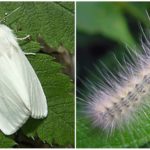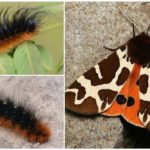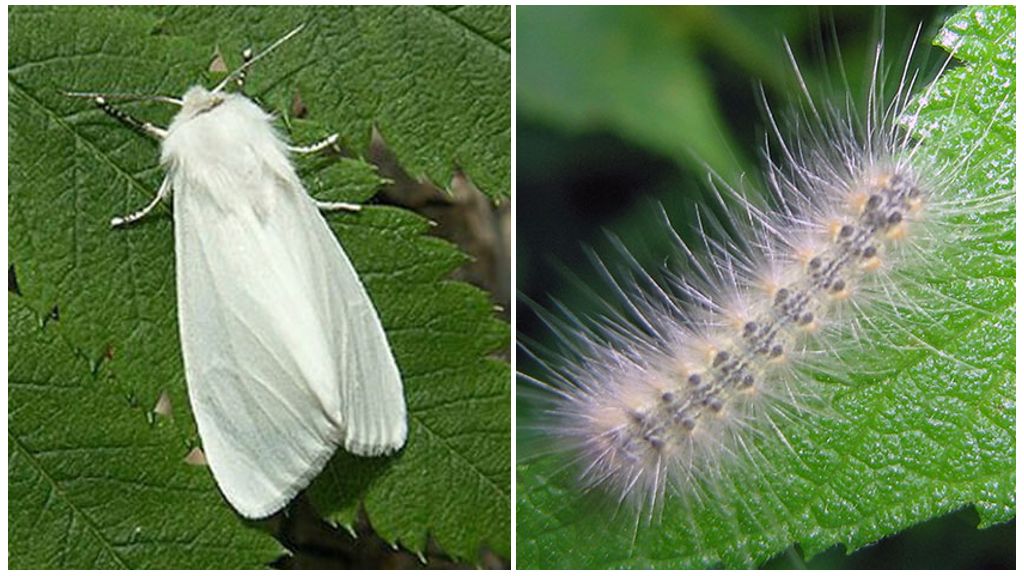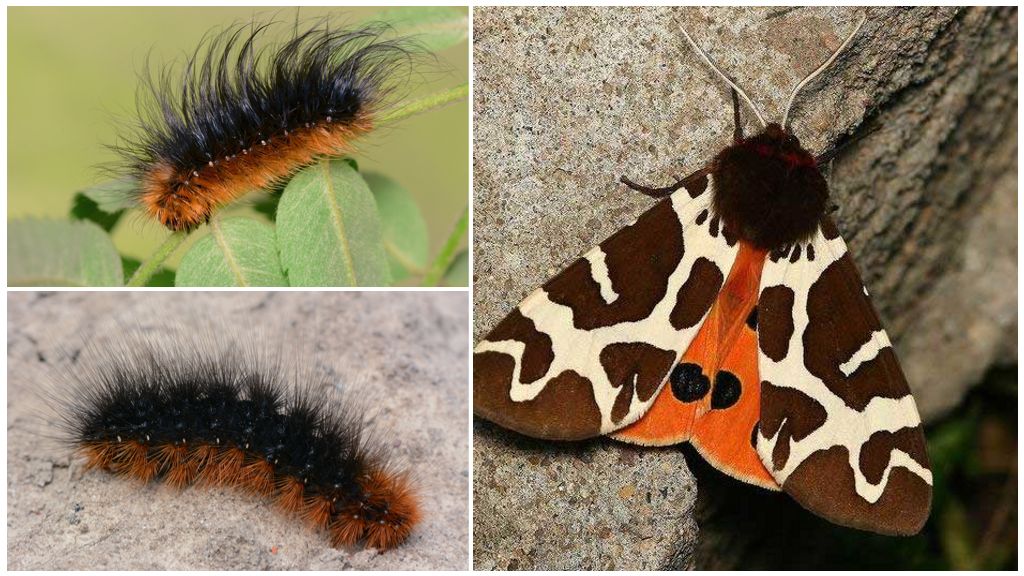Description and photo caterpillar dipper Kaya
Content
- American white butterfly
- Butterfly Bear Kaya
- Butterfly bears
The bear caterpillar has a no less attractive appearance than its butterfly. However, the external beauty hides the presence of a dangerous poison that can harm human health. These caterpillars do much harm to the plant world, so often the owners of gardens and orchards have to look for ways to fight with them. They are very voracious and feed on the leaves of most garden trees and crops.
American white butterfly
Bear tracks are nocturnal. They build spider nests for themselves and live there in small colonies. At night, individuals leave their nests and go in search of food. With the onset of the morning, the caterpillars return to their nests again. This way of life continues until they mature. Stunted individuals are able to survive alone.
On a note!
Homeland is North America, from which individuals migrated to the territory of modern Europe. Today, this species can be found in Ukraine, Turkmenistan, the southern and western parts of Russia, and also many regions of the Middle East.
Dipper kaya
This pest is common throughout the European part of Russia. Also, its representatives are found on the territory of Siberia and the Far East. Everything caterpillar's body covered with long hairswhich she uses for self defense.
On a note!
At the moment of danger, the caterpillar of the bear Kaya is rolled up and thus protects its vital organs from attack. There are hair tips poisonous liquid. It can lead to the development of an allergic reaction in humans. Particularly dangerous for children.
Years of butterflies are celebrated at the end of summer, so the caterpillars appear in the fall. Black shaggy individuals winter well in snags or dumped tree trunks.
Leopard bear
The caterpillar is the largest of the family of bears butterflies. The wingspan of a winged insect reaches 8 cm. The name is due to its color, which is similar to the stripes of a leopard. Occur in the eastern United States. The caterpillars feed on grassy plants as well as shrub and foliage trees.
Diarrhea Spilarctia imperialis
They build spider nests and live in colonies. This provides protection from many predators. In search of food individuals go at night. In the afternoon they sleep off. These caterpillars have a natural enemy - ground beetles. They live right in their nests and eat individuals.
Mrs Bears
Have a black color. On the sides of the body are bright and yellow stripes. On the body there are also small villi. In case of danger, the caterpillar behaves like most members of this large family.She curls up and teaches her hair on the enemy.
It prefers to eat rowan, nettle, poplar, buttercups, blackberries, strawberries. The caterpillar winters in the roots of plants, trunks of old trees. Pupation occurs in the spring. Cocoons are located on the soil surface.
Hebe bear
This species lives in the steppe zone and has a wide area of distribution. Butterflies are found in central and southern Europe, the South Caucasus, Asia Minor, Mongolia, China and many other countries. On the territory of Russia, individuals can be found in Siberia, the Caucasus, the Crimea, Central Asia and Kazakhstan.
Outwardly, it is a black caterpillar, on the body of which there is a large number of long dark gray villi. On the sides, these villi are distinguished by a more orange tint. Eat dandelions, plantain, spurge, millennial, thyme.
Thus, the caterpillars of butterflies of the family of bears characterizes an unusual appearance, which helps them to disguise in different territories. To protect the tracks there are poisonous villi. This allowed individuals to maintain the size of their populations.For agriculture, the voracity of the caterpillars poses a real danger and requires the use of additional measures to prevent the eating of the crop.








 (votes: 12, Average rating: 4.67 out of 5)
(votes: 12, Average rating: 4.67 out of 5)


